Department ofPhysics and Astronomy
Meet the Faculty
Suzanne Amador Kane
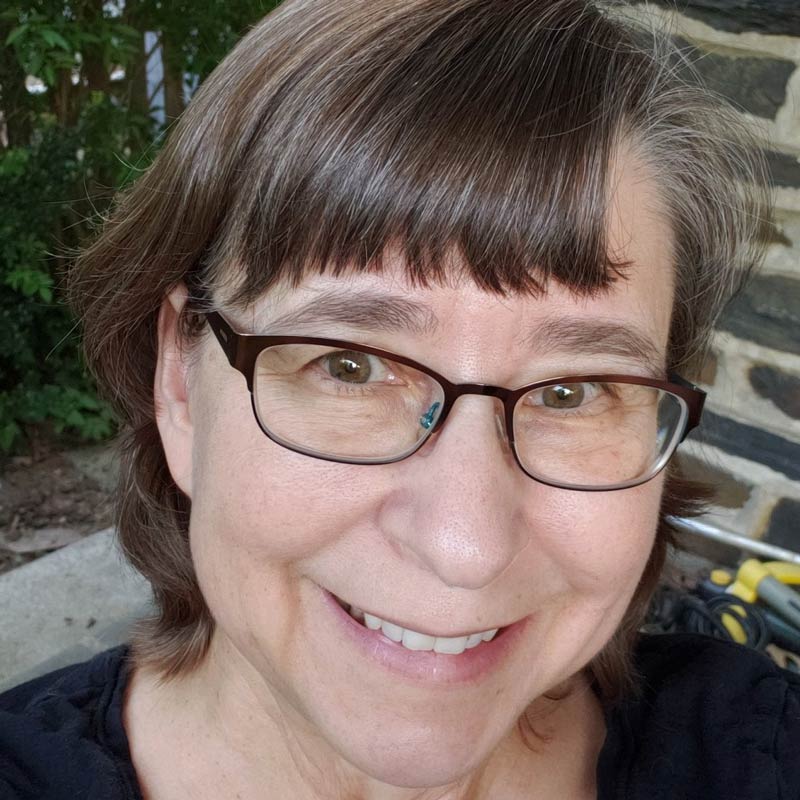
Fun Facts
I grew up in Chambersburg, a small rural town in south central Pennsylvania and now live in small town Narberth (midway between campus and Philadelphia) with my husband, Charlie, and cats (Theo and Mr. Renfro). We have two adult children.
My favorite recreations are reading, gardening, walking, hiking, and biking.
Research
Our lab is a great mix of both computational research and hands-on fabrication and engineering. A lot of the computational analysis we do has to do with image processing and analysis, so if you're interested in that this lab is a great fit for you! Recently we've also been working with deep learning neural networks and pose estimation, which is also super cool! On the fabrication side of things, our projects generally require custom made equipment which we get to make! I've had a great time making super niche tools and setups for the different experiments we've done. — Theo '22 (he/him)
Ted Brzinski
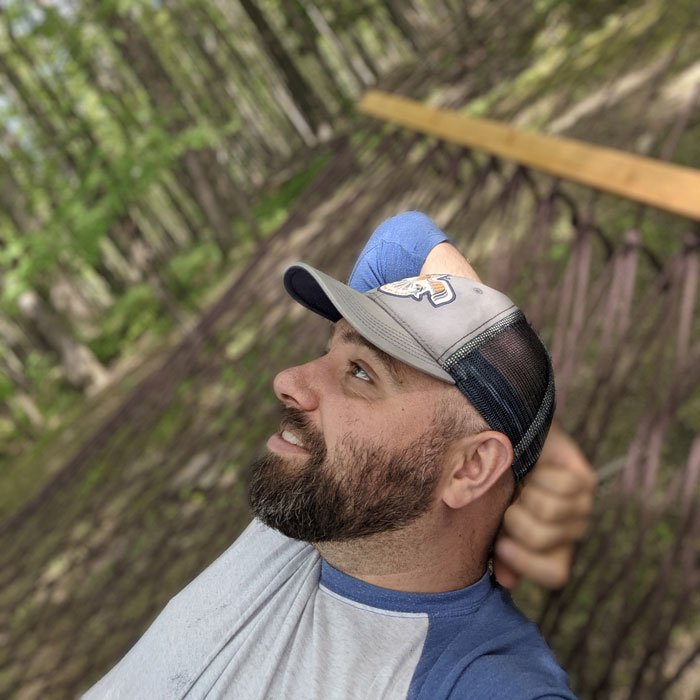
Fun Facts
- I have 2 young kids. They are my favorite people.
- I love animals and have had dogs, cats, reptiles, and amphibians. I'm presently trying to convince my family we should raise ducks. In college, I volunteered for a nature center specializing in wildlife rehabilitation and got to work with everything from birds of prey, large reptiles, and foxes to bunnies and sugar gliders. That's where I learned what a bad idea it is to come between a turkey vulture and its food. My wife taught me how to ride horses, and in grad school I occasionally volunteered with her at an equine therapy facility in Philadelphia.
- I love to cook and bake. I maintain a sourdough starter, have built multiple smokers (one of which worked pretty well!). I love to try new cooking techniques and recipes: my kitchen is my lab at home.
- I'm starting to learn guitar with my family, despite a complete lack of musical talent.
Courses I Often Teach
Statistical physics (303), 211 (co-teaching with Walter and Paul), 106 (spring), and Soft Matter Physics (353)
Research
Ted studies "soft matter physics," which basically means the study of squishy materials like sand, so Ted’s lab is called "SquishLab.” Because we are studying granular materials, the research has lots of potential applications in geophysics; the experiments we do in the lab can model real world systems like fault lines during an earthquake, hill slopes during an avalanche, and sedimentation in bodies of water. The project I'm working on studies the behavior of a collection of circular particles when they are compressed or sheared (pushed in two opposing directions, like what happens to the rocks in a fault when the tectonic plates move past each other). — Ashley Schefler '23 (she/her)
Dan Grin
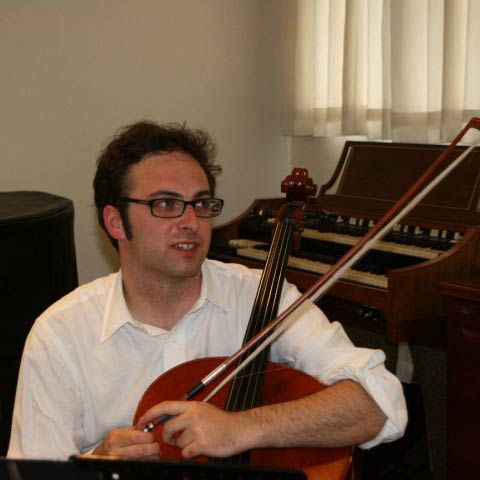
Fun Facts
I play cello. I once had to go to the ER because I injured myself after organizing a protest on healthcare issues. I speak Russian and French. I am fascinated by dark matter and the cosmic microwave background. I love the desert scenery of the American Southwest.
Courses I Often Teach
I have taught Physics 105, 213, 214, 302, 304, 308, 325 (general relativity) and 354. I love all of them, but waves and optics (213) are especially fun, as is general relativity. The time I spend doing physics, the more I realize it's all just fancy waves and optics. In 2024-2025 I will be on a sabbatical leave.
Research
Dan's research group works on testing fundamental theories of particle physics with astrophysical data. In particular, baby pictures" (prodiced 380,000 years after the big bang awww) of the universe, known as the cosmic microwave background (CMB), can help us determine something about the nature of dark matter, dark energy, or test if the fundamental physical constraints (e.g. the electric charge) evolve in space in time. We use CMB data (or forecast its promise) to test models where dark matter is very light (or macroscopically wavy), and to see if various models of varying e are warranted by the data. We are also exploring how various upcoming galaxy surveys can test similar models. We are also trying to see if we can reconstruct (rather than simply test, one model at a time) the fluid-like properties of the dark sector using cosmological data, using a technique called principal component analysis.
I worked with Prof. Dan Grin and his associate Andrew Benson on refining Andrew's model (Galacticus) for predicting dark matter halo concentration, or how much of the halo's mass is close to its center. Dark matter halos exist around all massive objects in the universe, including stars, planetary systems, and galaxies. The dark matter halos of a cluster of galaxies can bend light in a measurable way, creating an effect called "strong lensing" which magnifies images of distant galaxies that are behind the cluster in the same line of sight. Radial mass distribution which affects lensing properties is described by "concentration," and strong lensing events are theoretical ways to compare the predictions of dark matter halo concentration. — Turner '22 (she/her)
Andrea Lommen
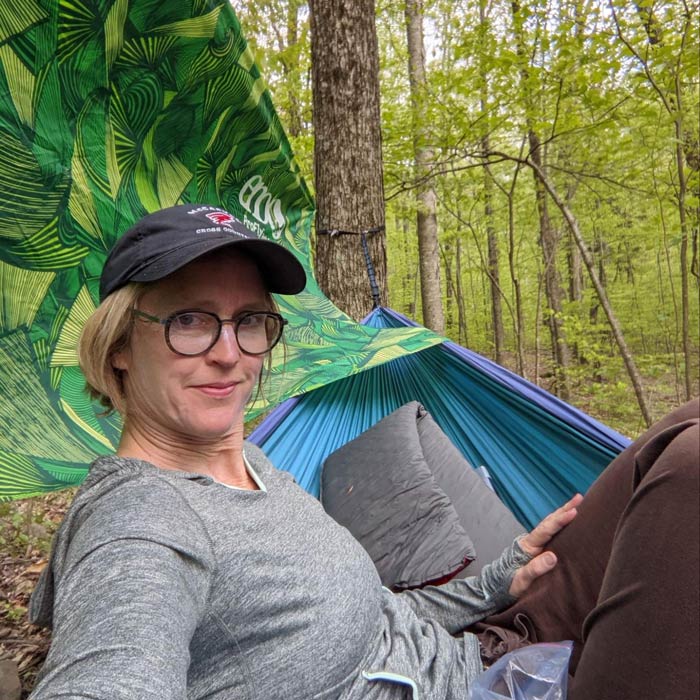
Fun Facts
I have been playing the drums for about 5 years now. I'm looking for a band. Let me know if you hear of someone who needs a drummer. I ride my bike 50-100 miles a week. It's how I stay sane. I really like musicals and movies, but really more the movies that have happy endings, like the musicals. I would love your movie suggestions. I have twin daughters in college.
Courses I Often Teach
I have taught (and invented!) Intro to Programming in Physics and Astronomy (PHY/AST/CS 104), and Gravitational Waves (PHY344). I have also taught 106, 204, 211, 213, and 309. PHY104 we offer nearly every spring and there is absolutely no programming experience required. In fact, the class is designed for people without programming experience. In the past couple of years I've added robotics to the class, which is great because three of our physics majors started a robotics club on campus! This year I'm likely to teach PHY105, AST101, and PHY104.
Research
The research I have done with Professor Andrea Lommen has been all sorts of wonderful because of the research we do and the people who are part of it! I work closely with another student using NANOGrav pulsar data to finish a paper months in the making on simulating pulsar detections to find a sort of idea future pulsar detecting scenario. We use time of arrival of x-rays from the NICER telescope for two specific pulsars. — Samantha '22 (she/her)
Karen Masters
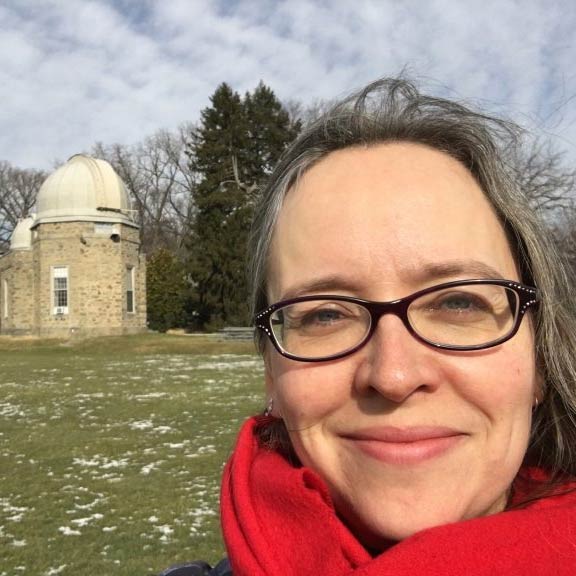
Fun Facts
- I've been involved in writing 3 popular science books (so far).
- I like to knit, and I have knit/sewed astronomically themed items.
- I make whatever shaped birthday cake my kids ask for (if I can) - cakes I've made include a stegosaurus, a map of the Earth in the shape of a heart, a pirate ship and a castle.
Courses I Often Teach
Some of my favourite courses to teach are Astro 341 “Advanced Observatory Astrophysics” and Astro 204 “Introduction to Astrophysics”. In recent years I have also taught Astr 352 (new 0.5 credit Extragalactic Data Science), First-Year Writing Seminar "Astronomical Questions", and Astro 101 “Astronomical Ideas” which is a domain requirement course intended for non-majors. In Physics I have fairly recently taught both PHYS105, and PHYS303 (Statistical Physics), and I enjoy helping out in Intro Physics Labs (for PHYS101, 102, 105 and 106).
Research
In galaxies, neutral atomic Hydrogen (HI) is an essential gas that can form molecular hydrogen (H2) which can then initiate star formation. However, there are a few HI rich Low Star Formation galaxies that are inefficient in converting HI to stars. I am investigating ionization sources and other parameters of such galaxies to answer why. Anubhav '23 (he/him)
Walter Smith
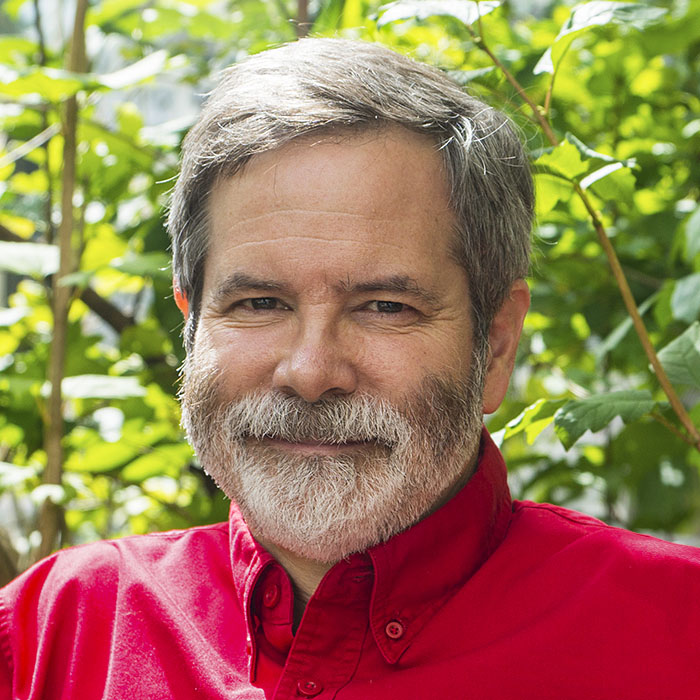
Fun Facts
- My research centers on self-assembling nano-scale circuits, i.e. electronic circuits that build themselves from a liquid solution.
- I like to write songs about physics, and often perform them in classes. I run a website, PhysicsSongs.org, devoted to songs about physics, some dating back to the 1920's.
- I've written two physics textbooks, Waves and Oscillations: A Prelude to Quantum Mechanics (used in physics 213) and Experimental Physics: Principles and Practice for the Laboratory (used in physics 326, and some parts used in physics 301).
- I love board games (favorites include Dominion, Clank, Ticket to Ride, and Empire Builder) and role-playing games (mostly old-school D&D).
Courses I Often Teach
- Fall: Physics 326 (Advanced Physics Lab), Physics 211 (Lab in Electronics, Waves, and Optics)
- Spring: Physics 102 (Classical & Modern Physics II), Physics 301 (Quantum Physics Lab)
Research
I am working in Professor Walter Smith's lab this summer where we are researching the conductivity of a DNA-porphyrin complex. Our experimentation process involves depositing this complex onto a thin piece of silicon (a substrate) so that the DNA strands form a connection between two gold plates. We then place the sample in a sealed plexiglass chamber and observe the current's response to a combination of voltage ramps, laser illumination, and humidity. The goal of this research is to better understand the process of DNA charge-transport so that DNA can be a useful and cost-effective tool in the world of nanoelectronics. — Sarah '24 (she/her)
Paul Thorman
Physics Lab Coordinator and Observatory Manager
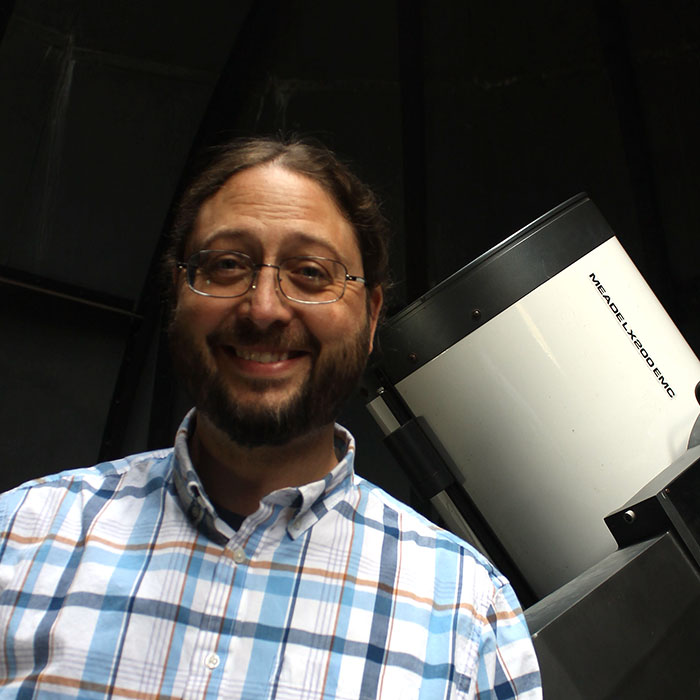
Fun Facts
Paul's hobbies include hiking, camping, crafting projects, and playing PC games with the family.
Courses I Often Teach
Paul Teaches intro labs (Phys 101, 102, 105, & 106) and intermediate labs (Phys 211, Phys 301).
Research
- Paul has past experience teaching Astro 341 (Observational Astronomy) with an emphasis on visible imaging
- Assists with classroom demonstrations - personal favorite: magnets
- Organizes student workers for the department (graders, TAs)
- Past experience teaching Astro 341 (Observational Astronomy) with an emphasis on visible imaging
- Helps with training, upgrades, and repairs to Strawbridge Observatory
Feel free to let us know what you'd like to see on the page, parts that are confusing, and any other thoughts! Share Your Thoughts